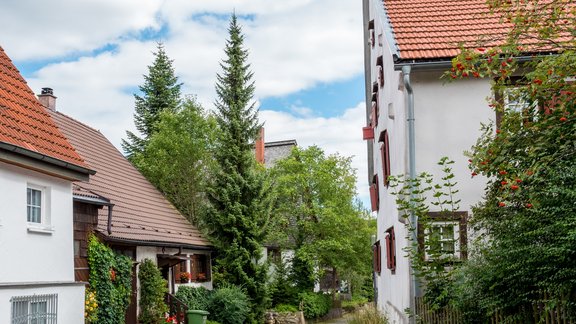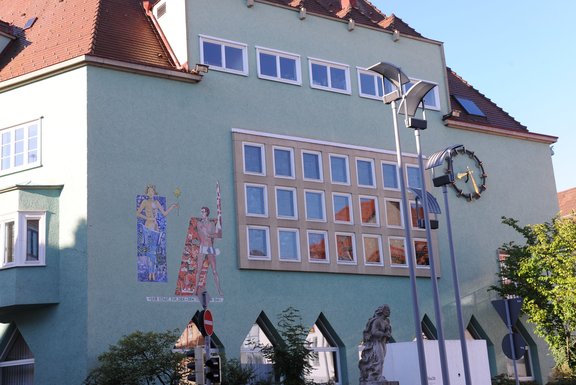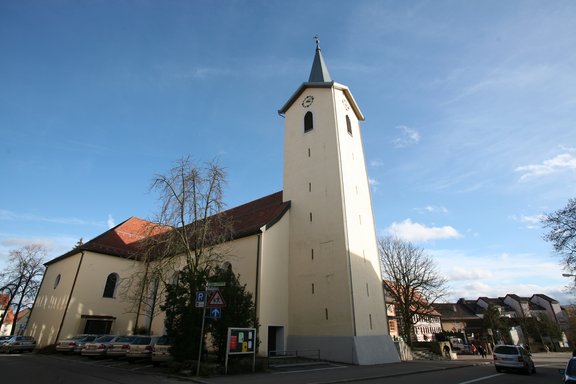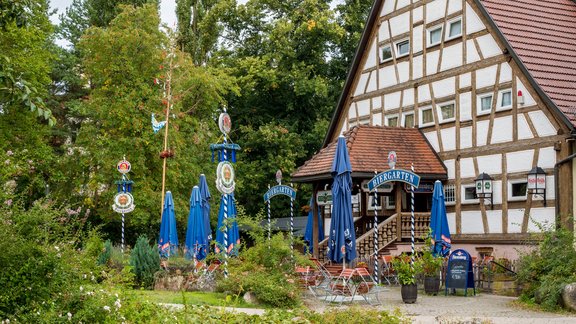
Buildings worth seeing
Ob dem Brückle

The former redevelopment area 'Ob dem Brückle' is an idyllic corner with half-timbered houses, which gives impressions of the rural past of Schwenningen. The art barn, built in the 17th century as a farmhouse, is particularly striking. Today it houses a pottery.
City Hall of Schwenningen

The Schwenningen City Hall was designed by the architect Hans Herkommer and built in the late expressionist style between 1926 and 1928. On the front side towards the market place there is a mosaic depicting 'War and Peace'. Since 1972 it has served as a technical town hall.
Die Eilende Zeit alias Olfewiib
It lives up to its name: The statue "Eilende Zeit" on Schwenningen's market place looks very stressed with its hourglass and flowing clothes.
The statue was built in 1953 by the artist Jakob Wilhelm Fehrle. He gave it the name "Die Zeit" (Time), probably thinking of how quickly seconds, minutes and hours pass.
For the Schwenninger citizens, however, the statue has a completely different meaning:
For them, it is called the "Olfewiib", which refers to the "Elf-Uhr-Women" of the clock industry. At 11 o'clock the lunch break began for the workers' wives, during which they hurried home to prepare the food for their husbands and children. Punctually at 1 pm they were already back in the clock factories.
These "eleven o'clock women" were very industrious...
Protestant Town Church

The protestant town church is the oldest and still the central church between the market place and the Muslenplatz. Its tower from the 15th century is a landmark of Schwenningen and the oldest building in the district. The church was built in the 15th century on the site of the old St.-Vinzenz-Church. It burned down in 1525 and 1633 except for the tower. In 1700 it was rebuilt with a single nave and in 1837 it was equipped with a transept. In 1963 the protestant town church was completely renovated, especially inside.
Vogtshaus

The Vogtshaus was built in 1791 and is one of the oldest preserved houses in Schwenningen. Its impressive Renaissance gable can be seen on the street side. In 1797 it was passed to the lower bailiff Johannes Roller and in 1901 to the clock manufacturer Mauthe. Today the building houses two inns with beer gardens.